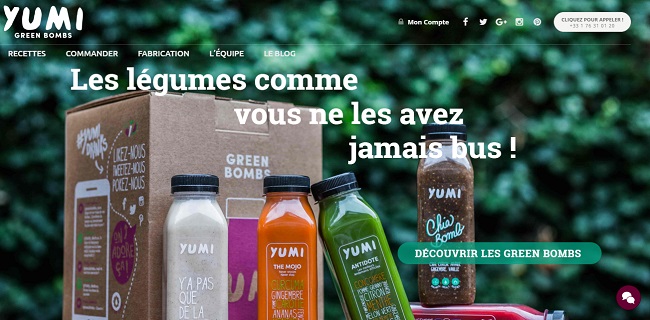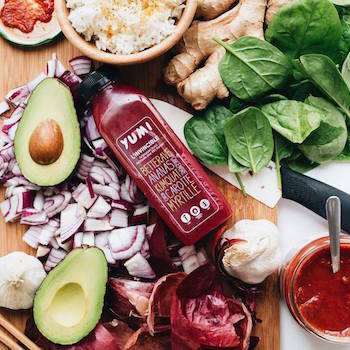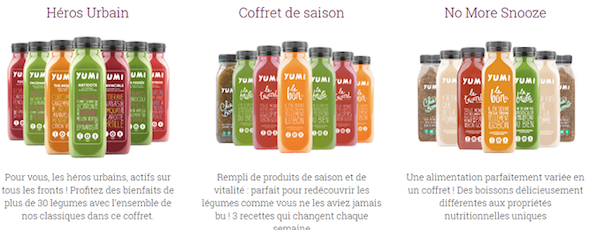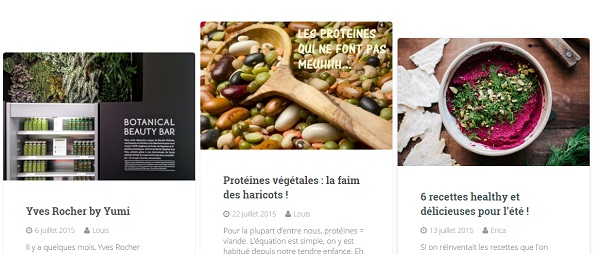
WooCommerce Analytics Case Study: Yumi On a Growing Quest
As part of our journey to built the most useful WooCommerce analytics platform, we’re starting a series of case studies about how real e-commerce businesses choose the KPIs they measure success by and how they analyze their data.

Yumi was created to fill in a niche Louis de Bentzmann and Raphael de Taisne discovered was missing in France 2 years ago – healthy food on the go. They found it really hard to keep nutritional balance while leading a busy life – preparing healthy food is time-consuming.
So they came up with the idea of a direct-to-consumer brand that produces fresh vegetable juices and delivers them fast to health-conscious customers. They use cold extraction to make the juice (nutrient-rich) and High Pressure Processing technology to preserve it (eliminating microorganisms while keeping all the good stuff).
Their recipes are unorthodox but designed together with nutritionists. Pear, fennel, and spinach, anyone?
Online, their customers can subscribe for a box of 7 juices a week. And it turned out people from varying age groups needed a fresh fix – and now the company is expanding offline to over 30 physical retailers in France.
The company is in growth stage now and the analytics they use at the moment help them capture quality leads, convert them by providing value and develop a meaningful relationship with them in the long term.
How analysis helps in customer acquisition
What matters the most for the company is keeping acquisition costs under control, basing the calculation on customer LTV. They aim for an instant ROI, but sometimes long-term return makes sense – lose money on the first order but make sure the next orders make some profit.
How to measure acquisition?
Yumi have set KPIs that work for their business at the moment as they’re focusing on growth. Here is the break down by acquisition channel.
Overall traffic to website: by Unique Visits – set a monthly goal based on historical data
Per channel: by ratio = acquisition cost to revenue
Facebook especially: by cost per purchase
Affiliate partners: by cost to traffic generated
Email campaigns: by conversions
By closely monitoring each of these metrics, the company is able to grow in a profitable way, paying for visitors only as much as it can afford. Another thing to note is their focus on channels that have proved their value instead of spreading too thin over all possible channels.
It seems to be working as Louis doesn’t even mention getting more customers on his daily top 3 to-do list.
If you’re curious to know what they actually are:
- Talking to customers
- Improving website
- Partnerships & distribution network
Analyzing your visitors to provide better on-site experience and higher conversions
The team analyzes customers by acquisition channel and incentive, e.g. coupon used, to identify what works and replicate it. They like to tag them on these characteristics and revisit as the relationship with these customers develop.
Cohort analysis has a similar function. The team follows the distinctive groups of customers, acquired in a certain month, and how they develop over time – whether they shop regularly and spend a lot, or only respond to promotions and churn altogether. This way, the team knows what special thing they did in a particular month that made it successful.
Improving conversion rate with emails
Louis is a firm believer in email as a reactivation tool for WooCommerce. He tries to stay in people’s minds with at least one email a month. We applaud this classy and non-intrusive approach to email marketing (nobody likes spam).
He develops the email content together with nutritionists to deliver useful and exclusive information on healthy nutrition to his subscribers. How to make them subscribe? No pressure, just a sidebar offering “6 tips on nutrition”.
“It’s classic, but it works, “ Louis says about providing value via email and its effect on conversions.
Retention
For a company like Yumi, retention is essential – their product is not a one-time buy. How to achieve it?
As they aim to offer state-of-the-art customer service, Louis finds knowing what people do on the site key to personalizing their experience. He segments customers on their behavior and engages each segment through a different series of emails. His experience so far shows it works amazing for improving retention.
Event-triggered emails – after 1 order, on the first-order anniversary, etc. – also prove to be working. “Keep your visitors close and your customers – closer,” the new saying goes. 🙂
Still in growth stage, they concentrate on providing outstanding product and customer service to boost loyalty among customers. Behavior analytics is their weapon for making their customers happy in the long term.
Try Metrilo for free
Build and grow your ecommerce brand
Metrilo’s mission is to help you build your ecommerce brand and win your place in the customer’s heart. We share what we learn from our daily work with product innovators and founders here. Subscribe to our weekly newsletter to get the freshest lessons and conquer your niche.
We promise, no spam.
Thank you for subscribing!
See you soon :-)





